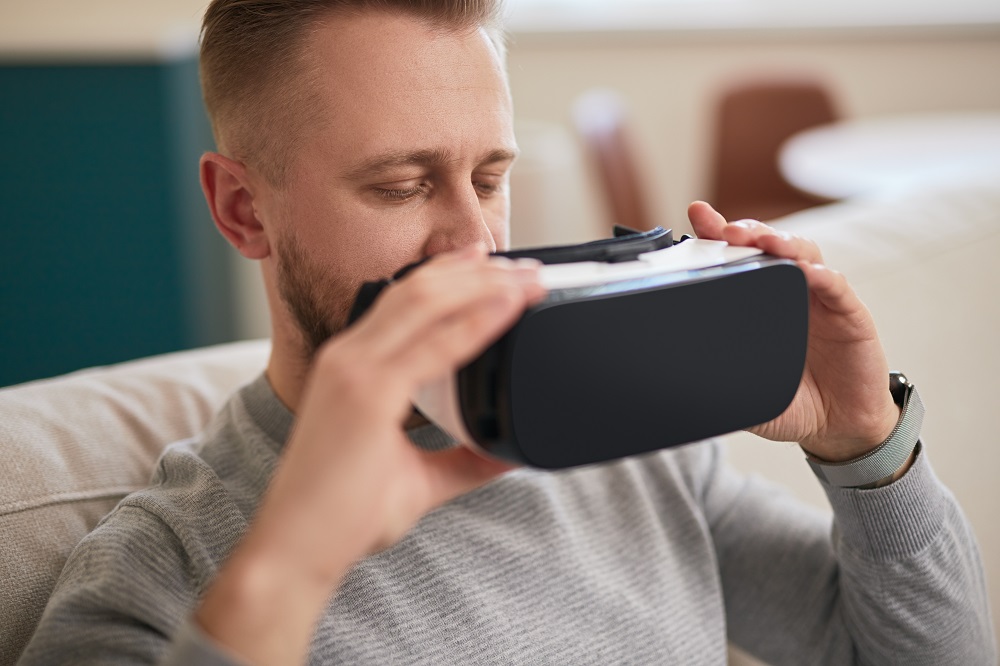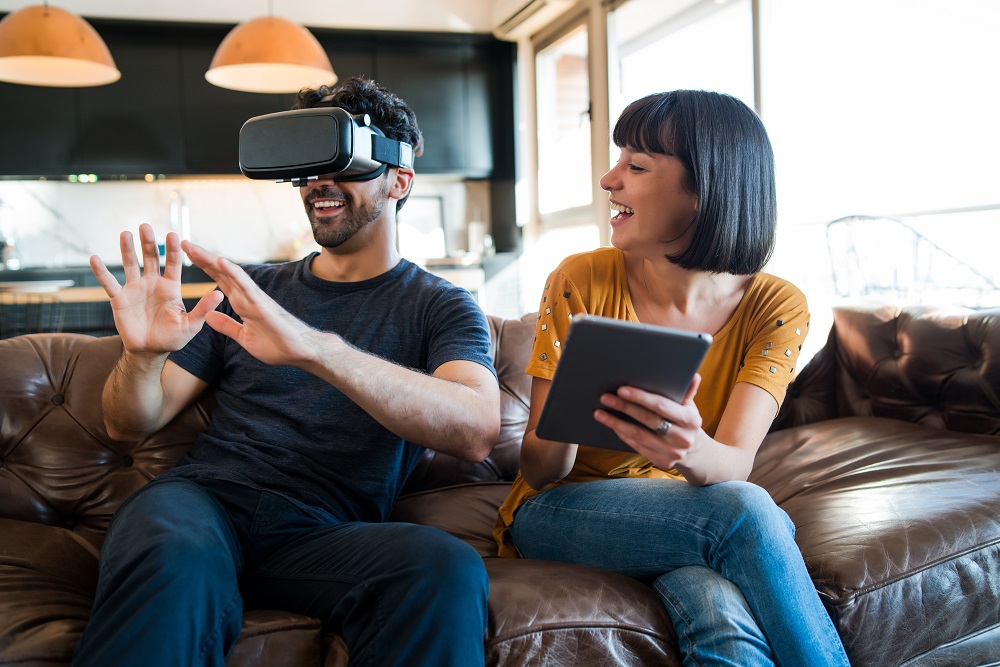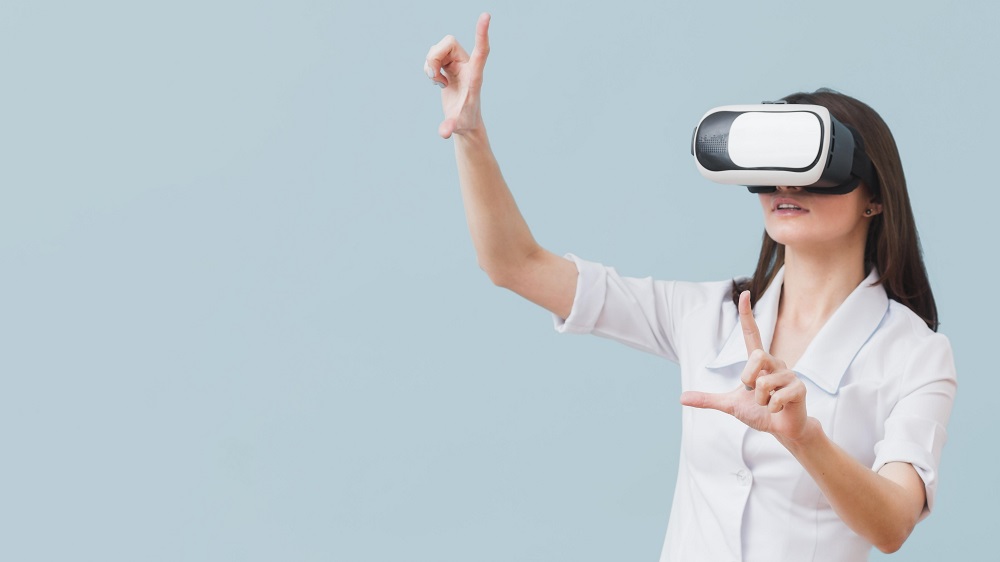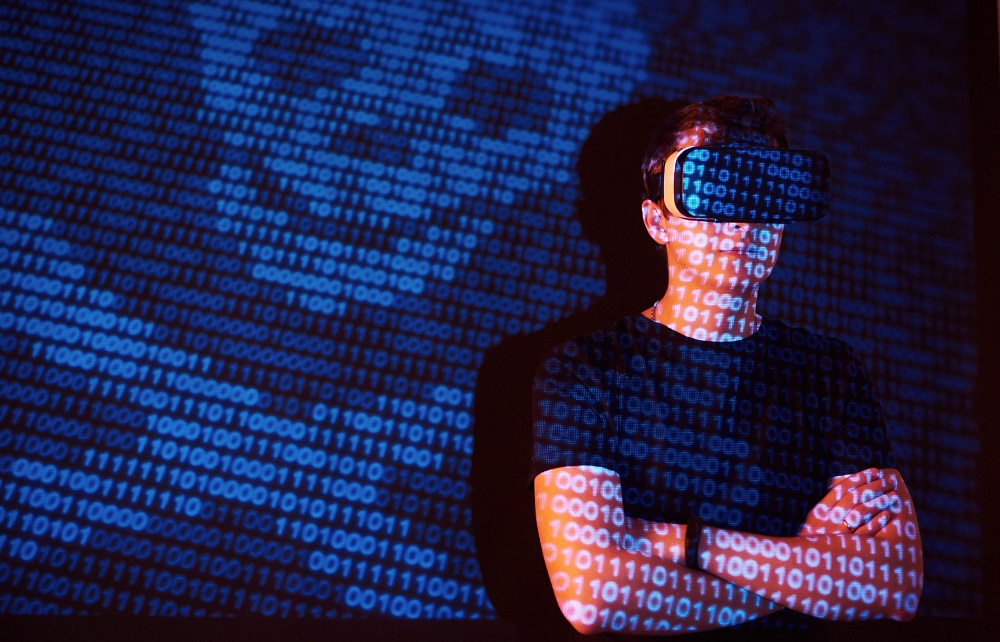We have all heard about Virtual Reality which is in fashion right now, but what is Virtual Reality? Let’s start with basics: is a set of scenes and objects that are generated by computer technology, where the user feels that is immersed with glasses or a Virtual Reality helmet, making it possible to perceive 360° scenarios in high definition, also It has audio and motion sensors.
VR is to be expected to grow to $84 billion in 2028 so it’s definitely worth learning as much about it as possible and get on the wagon, even if your business is “not-so-tech”. Let’s see.
What is virtual reality and how does it work?

With Virtual Reality you have the possibility of immersing yourself in a video game as if you were the character, you can learn to carry out operations of any kind or carry out sports training. In other words, depending on the objective of the simulations, the images may or may not be realistic.
VR allows the creation of virtual landscapes and environments that feel as if you were interacting with the real world. Which means that VR is a type of tech that simulates reality or try to give the user an alternative experience of reality. VR has evolved a lot since its first exhibition in the 50s and it keeps getting more and more immersive, and ever since the interest have only grown at a 48,7% CAGR between 2021-2026. You must consider that the 2020 pandemic accelerated it, making spaces feel safer and flexible again outside the real world.
So, if the goal of VR is to simulate reality as much as possible, you must be wondering which tools are used to achieve this? There are plenty of them as headsets, glasses, and handheld controllers. But the technology is striving to improve to make it as less obtrusive as possible. In the meantime, headsets allow a field of vision to move as the user turns their head, as well controllers keep getting more advanced allowing user to make subtle movements reflected in the VR world.
In general, Virtual Reality systems are composed of the following:
- Virtual Reality glasses/helmet: these project the images. They generally incorporate a screen or the support that includes one, such as a smartphone or tablet for example.
- Processor: It is the hardware that is responsible for the operation of the technology, usually integrated into the screen.
- Position sensors: monitor the user’s location and movements to recreate them in the virtual world.
- Software: is responsible for managing the execution of the system, processing the images and coordinating the system in general.
These have been the basic components, but this type of technology can include other types of sensors or peripherals to increase the level of interaction, such as:
- Audio systems: there is a possibility that the Virtual Reality environment can work without audio, but they are usually included.
- Wide-range sensors: Sensors can be placed in multiple rooms or throughout the building so that the system allows users to move based on their real-life movements.
- Hand controls: they serve as input systems to quickly execute functions in the virtual world.
- Simulators: they detect the user’s movements in the virtual world and recreate them in real life.
- Moving treadmills: it is a treadmill for when spaces become limited without the user having to move around the room.
What is the difference between augmented reality and virtual reality?

There are different types of Virtual Reality, it is important to know how to differentiate concepts.
- Augmented Reality: projects real places and also exposes virtual elements. Usually use GPS and camera of devices, no additional accessories needed. A very successful application that uses Augmented Reality is Pokémon Go.
- Virtual Reality: it is an immersive experience that transports you to other places
- Mixed Reality: Join the previous two. You can see the real world with virtual elements, but at the same time add the lenses so you can move and explore all angles without having to use your smartphone.
What AR and VR have in common is that both have the ability to alter the user’s perception of the world, what is different is the perception of the user’s presence. VR is able to transport the user into other worlds with the help of tools that put the use’s presence elsewhere, unlike AG that takes the user’s current reality and adds something to it.
VR applications
VR first started for games and entertainment applications, but as the tech evolved so has its usages.
Virtual Reality can be used in various fields and for various purposes: In the field of education, there are many possibilities to use this type of technology, it can be used to visit museums from a distance, design buildings or learn about planets. In the middle of the health and medicine industry, in cases of surgery, it is used to simulate parts of the body before an operation.
Similarly, an architect or engineer can also take advantage of this technology to simulate the construction of a project, being a powerful tool for clients to visualize the designs before and after construction.
Likewise, virtual reality systems can be used in the area of communication in interactive documentaries or 360° news streaming. In industrial applications, virtual reality can be used in the field of maintenance or complete remote assistance including collaborative mechanisms. It is also possible to train personnel in the handling of industrial machines and heavy equipment without this representing a risk. Or you can simulate realistic incident environments. These drills can help corroborate actions, leaks, or machinery failures.
Virtual reality technology can have military applications, such as combat training in simulated environments.
In the tourism area, it can be used as guided tours with high-quality 360° images, or it can be used to take customers to different parts of the world depending on the type of international food they choose.
Do you think this has nothing to do with you?

There are so many usages and possibilities when it comes to VR for any type of business you are managing right now. Stringnet can help you to surf the new VR and AG waves, even if your business is not tech related.
If you want to sell in today’s world, this has a lot to do with you. We can help you with virtual and hybrid events and a creative strategy to attract new clients in the metaverse.
We can guide you to maximize your company’s potential, don’t hesitate to contact us.


